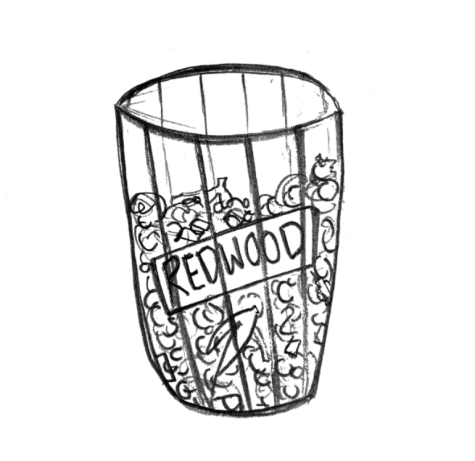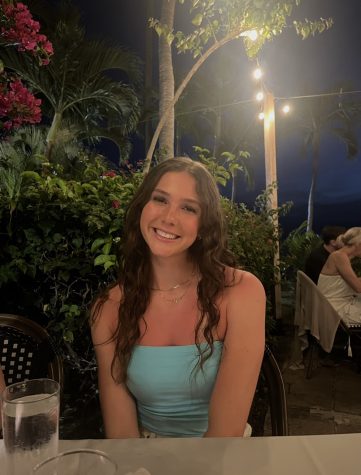From the months of December to March, Marin faces heavy rainfall making it difficult for students to eat at their usual outdoor lunch spots. During this time students are forced to eat inside the school, whether that be in the middle of the hallway or in teachers’ classrooms. This often creates a mess of trash and food scraps. However, this can be easily avoided and can keep teachers and staff from cleaning up the mess that students leave behind. An indoor eating area would be a convenient and useful addition to Redwood high school to provide students with a cafeteria and would relieve teachers of unnecessary cleanup.
Currently, the Covered Eating Area (CEA) is used as a grab-and-go lunch system where students line up on the inside and outside of the building, grab their lunch, and find a spot to eat around campus. This expedited system has been in place since the first COVID-19 outbreak and has left very limited seating for students trying to eat their lunch indoors. Ever since the closure, students have been forced to resort to other covered places around the school such as the locker room or the hallways to eat on rainy days.
Usually, my friends and I eat at an outdoor table, enjoying the sun and sitting comfortably. On days when it isn’t so sunny, however, we find ourselves dreading sitting on the cold, linoleum floor talking over the numerous other groups of students that have also resorted to sitting in the crowded hallway.
After the lunch bell rings, we look around to find the hallway littered with trash left behind by careless students traveling to their next class. This garbage is a massive issue and it leaves another task for janitors to take care of, along with cleaning every classroom, bathroom, and gym in our school. Without this trash and mess left behind, our school would be a more sanitary environment for students and staff and would provide relief for the janitorial staff.

In a 2023 Bark survey, 21 percent of students said that they eat lunch in a classroom, 24 percent of students said they eat in the hallway and 12 percent of students said they eat in the gym when it rains. The gym and hallway floors are cold and uncomfortable. In classrooms, food and trash cover the desks and ground creating a dirty learning environment for students and teachers.
Even though indoor eating would relieve teachers from cleaning their rooms after students leave a mess from their lunch, this issue would not completely be resolved. No matter where students eat, they will most likely leave behind any sort of food or trash from their lunch. Therefore, there will be the same amount or even more trash left in this eating area as there is in teachers’ rooms. However, teachers’ rooms are not meant to be eaten in and should be kept as a clean environment for students to learn. In addition, teachers should not be held responsible for the mess that these students leave behind from their lunch. If this mess was all kept in a certain and specific area, it would be a much easier clean-up process for janitorial staff. Even though a cafeteria wouldn’t remove messy eating as a whole, it would confine it to one specific area that would make for an easier job for janitorial staff and would create a better environment overall.
Redwood clearly needs to create an indoor eating space for students such as a cafeteria. This will not only be beneficial to the students during the rainy months but will also benefit the teachers and janitorial staff as the mess will be out of the classrooms and off of the majority of campus. Instead, the food and scraps will be all in one area making it easier to clean up. If Redwood doesn’t make this happen, will our school continue to get messier?







